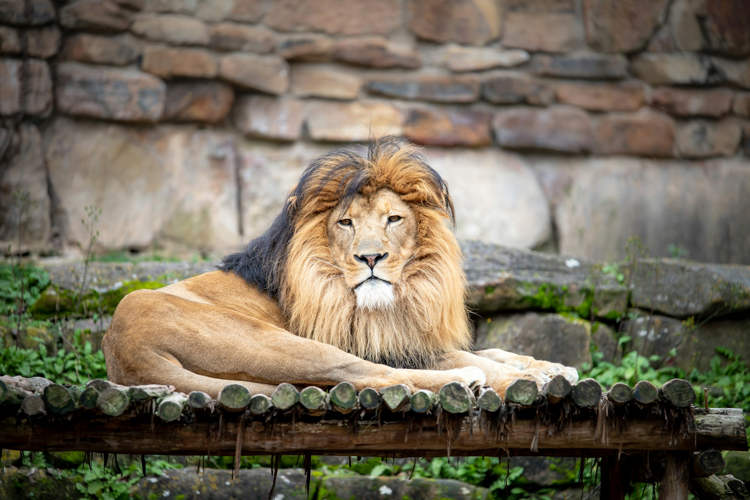For most of us, swinging 360 degrees around the spindle of a swing set is a distant childhood dream, but for a group of adrenaline seekers in Estonia, it’s a passion they never grew out of. Not only do they still love defying gravity, but they actually created a competitive sport around their favorite pastime. That sport is known as “kiiiking”.
Swings are deeply embedded in Estonian culture, and you can still find various types of swings in villages and towns all around the country. They are used by children and adults alike, either for simple fun, or as a way for communities to bond during celebrations. So maybe it doesn’t come as a big surprise that Estonia has an extreme sport based on swinging. Some people see it as dull, others as pointless, but to those who practice it, kiiking is the coolest thing in the world.
As you might remember, swinging around the spindle of some playground swings was possible, but at the same time dangerous. From simple bruises to broken bones and concussions, there were a lot of things that could go wrong during such an attempt, which is why in 1993, an Estonian man by the name of Ado Kosk created a pair of wooden swings designed specifically for going all the way around the spindle. They were rudimentary contraptions made up of simple levers with a pair of wooden rods attached to a flat seat on one end and the rotating spindle on the other. Nobody knew it at the time, but that was when kiiking was born.
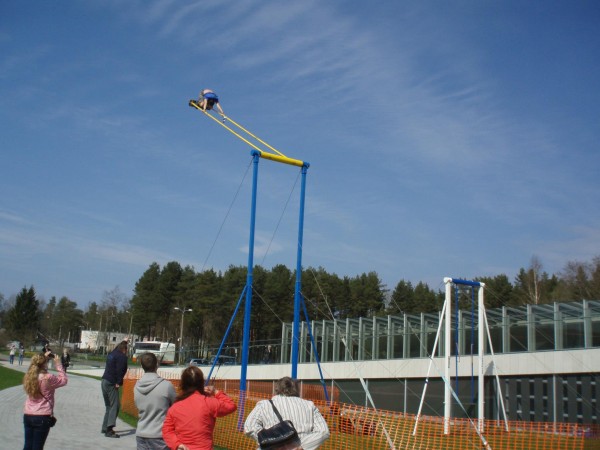
Photo: Kiiking/Facebook
Daredevils tied their feet to the to the seats of Kosk’s swings and pushed their bodies back and forth to gain momentum until they did a full 360-degree rotation around the spindle. It was just as fun, but much safer than trying it with a regular swing. However, there was nothing competitive about it. Then, a man named Tarmo Männigo tried to swing around the spindles of both of Ado Kosk’s swings, one of which stood about 2.5 meters tall, while the other just a bit taller, at 2.7 meters. He nailed his attempt on the first one, but couldn’t quite get all the way around the spindle of the taller swing. That’s when kiikers realized that the higher the swing was, the tougher it became to complete a full circuit around the spindle, and that this introduced competitive elements. That’s when kiiking became a competitive sport.
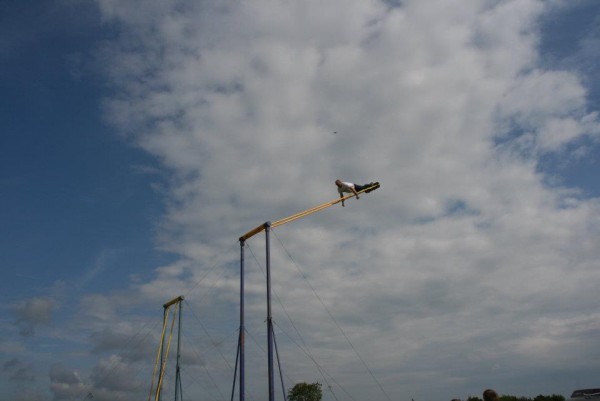
Photo: Kiiking/Facebook
Ado Kosk continued to refine his kiiking swings, and in 1997, he came up with a telescopic version that could be raised and lowered safely, in order to test the skill level of competitors. Kiiking swings have come a long way since the 90s, and the ones used in competitions today have far surpassed Kosk’s design, but he is still regarded as the father of the kiiking swing.
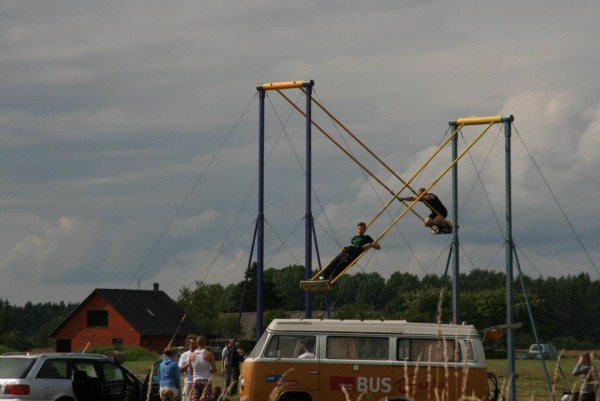
Photo: Kiiking/Facebook
The rules of kiiking are pretty simple. Competitors start swinging at a certain height, and provided they can complete a full circuit around the spindle, they can attempt to do the same after the swing has been raised by a few centimeters, and so on. Those who fail to do a full spindle are left with the result of their last successful attempt. Professional kiiker Raili Laansalu explained the general rules in an interview with Atlas Obscura. “I set my first height at 4 meters. I make one spindle so I am allowed to choose a new height. For next one I choose 4.20 meters. I also complete that so I choose now 4.50 meters. If I do not complete 4.50m, my end result will be 4.20m,” he said.
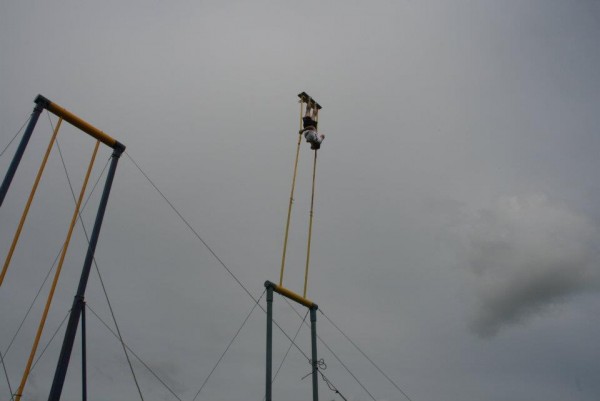
Photo: Kiiking/Facebook
Watching kiiking videos might give you the impression that it’s an easy sport, but Laansalu, who has been practicing it since she was 8-years-old, says it requirs both great physical strength – strong legs and strong arms – but also impeccable technique – knowing when to stand or sit in the swing chair, and when to thrust to push yourself over the spindle of the swing.
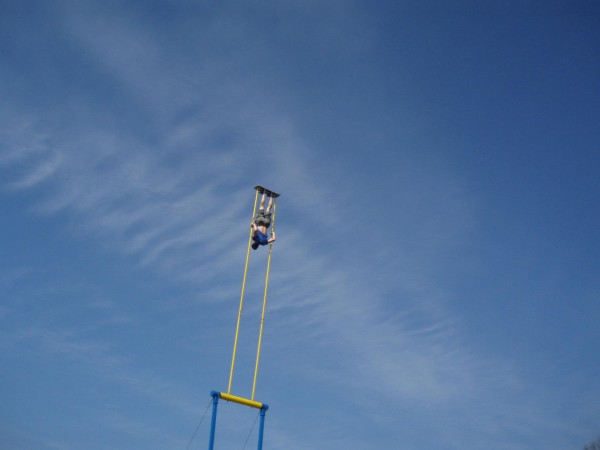
Photo: Kiiking/Facebook
Small groups of kiikers have been popping up in other countries, including the United States, but so far it is still considered an Estonian sport. There are no international kiiking competitions yet, but Estonia has several national kiiking events all throughout the year.
“When you are standing upside down and looking at the ground and all around you—and you know that you cannot fall down—well, it feels like you are between heaven and ground,” Laansalu, who founded Kiiking.com, told Stowaway Magazine. “I have never felt anything like that anywhere” Her kiiking record stands at 4.83 meters, whish is not too shabby, but the Guinness World Record stands at a seemingly unbeatable 7.15 meters. It was set on September 16, 2015, by an Estonian kiiker named Kaspar Taimsoo.

